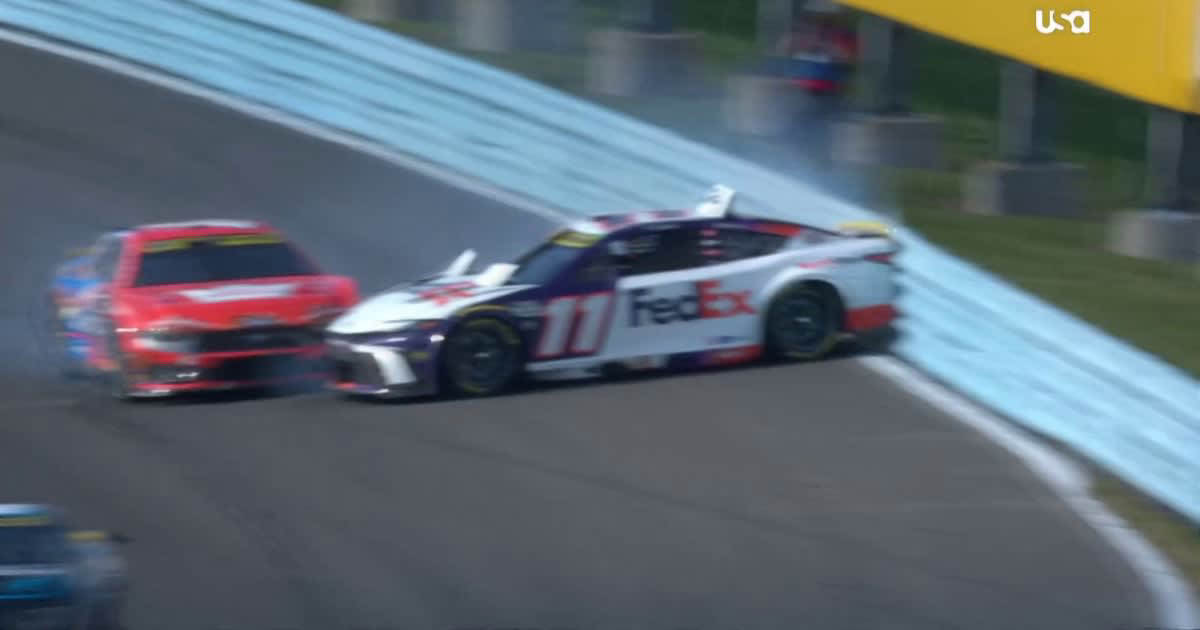
In the aftermath of the Watkins Glen disaster, Denny Hamlin’s criticism of Brad Keselowski and Kyle Larson brings to light the intense emotions and high stakes of NASCAR racing. The Watkins Glen International race, known for its high-speed turns and challenging layout, witnessed a devastating crash that left fans and drivers alike in shock. The incident, which led to significant wreckage and injuries, prompted a wave of reactions from the NASCAR community, with Hamlin’s comments being particularly notable for their directness and candor.
Hamlin, a veteran driver with a reputation for speaking his mind, did not hold back in his assessment of the actions of Keselowski and Larson during the race. His critique was rooted in a deep-seated frustration with what he perceives as reckless driving and a disregard for the safety of other competitors. Hamlin’s comments were not merely a reflection of personal disappointment but also an indictment of what he views as a broader issue within the sport: the balance between aggressive racing and responsible conduct on the track.
Brad Keselowski, known for his aggressive racing style, was at the center of Hamlin’s criticism. Keselowski, who has often been involved in controversial incidents due to his hard-nosed approach, faced allegations from Hamlin that his driving contributed to the chaos at Watkins Glen. Hamlin argued that Keselowski’s decisions in the heat of the race were a primary factor in the wreck that ensued. In Hamlin’s view, Keselowski’s maneuvers, while part of his competitive nature, crossed a line that endangered the well-being of his fellow drivers.
Kyle Larson, another driver known for his bold racing, also came under scrutiny from Hamlin. Larson, who has been praised for his skill and daring on the track, was accused by Hamlin of contributing to the wreck through overly aggressive tactics. Hamlin’s criticism was aimed at Larson’s approach to overtaking and positioning, suggesting that Larson’s actions were reckless and exacerbated the situation. The essence of Hamlin’s critique was that Larson’s aggressive style, while thrilling, sometimes failed to account for the potential risks involved.
Hamlin’s remarks highlight a critical debate within NASCAR: the fine line between aggressive racing and safety. NASCAR has always celebrated its drivers’ competitive spirit, but incidents like the Watkins Glen disaster force a reevaluation of how far that aggression should go. Hamlin’s comments underscore the tension between maintaining the thrilling nature of the sport and ensuring that all participants are racing under conditions that prioritize their safety.
In response to Hamlin’s criticism, both Keselowski and Larson defended their actions, arguing that racing inherently involves a level of risk and that their decisions were made with the competitive context in mind. They maintained that while accidents are unfortunate, they are an inevitable part of high-stakes racing.
The broader implications of Hamlin’s criticism are significant. It serves as a reminder of the need for ongoing dialogue within NASCAR about how to manage driver behavior and safety. As the sport evolves, finding a balance between maintaining its thrilling essence and ensuring the safety of its participants will remain a key challenge.
Hamlin’s outspoken criticism is a reflection of the passionate and sometimes contentious nature of NASCAR. It reveals the complexities involved in racing, where every action on the track can have far-reaching consequences. As NASCAR moves forward, the discussion sparked by Hamlin’s comments will likely continue to influence how the sport addresses the issues of aggression and safety.
Leave a Reply